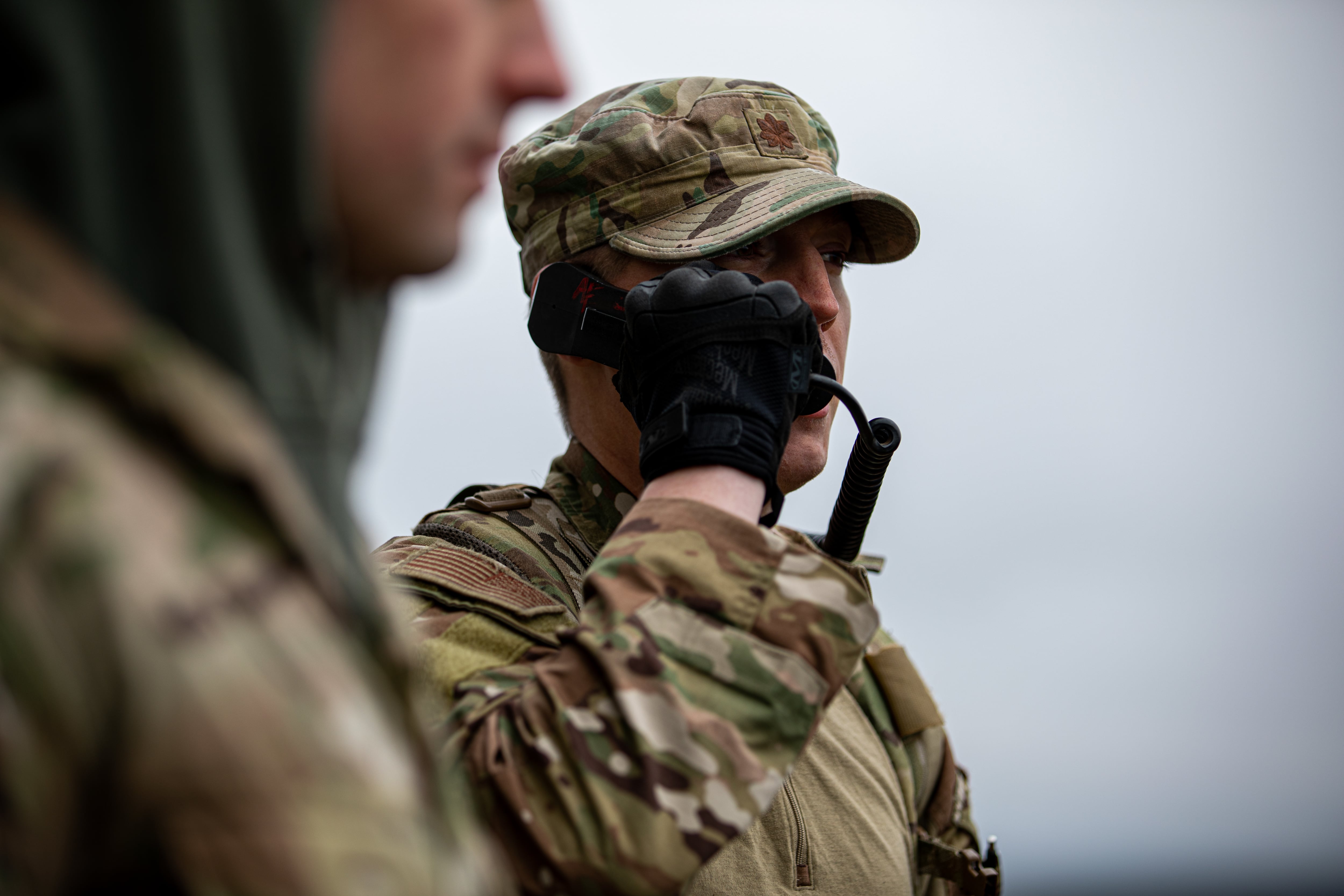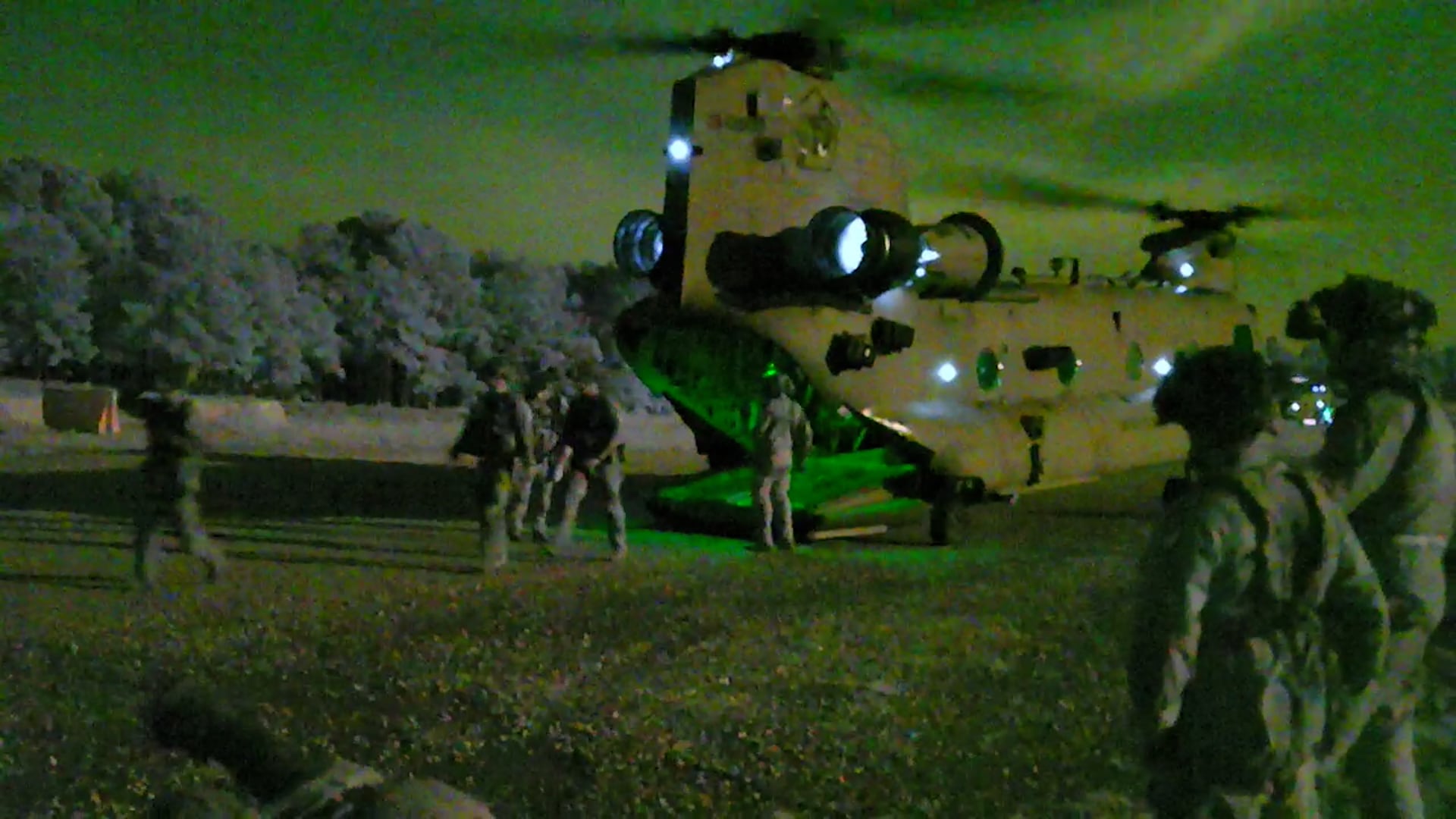A new Army-made software application is allowing soldiers to identify a target and send a fire mission in under a minute when it used to take 15 minutes. Those same soldiers have rigged cheap drones with a cheap, off-the-shelf circuit board and sensor to make electronic decoys of their command posts, throwing enemy fires off target.
This brave new world in Army electronic warfare was on display recently during the 2nd Brigade, 101st Airborne Division’s rotation this month at the Joint Readiness Training Center.
The U.S. military in general, from the Pentagon to each service branch, is prioritizing such capabilities, both how to use artificial intelligence and drones and how to defend against an enemy using the same technology.
During the 101′s recent rotation, soldiers used a new app called “Shrike,” which identifies targets with minimal information and spits out a ready-to-go, call-for-fire mission.
The app is the brainchild of Army Futures Command, featuring software that uses an artificial intelligence capability mounted on any fielded drone. Each drone’s small circuit board draws on a large-language model backbone.
Soldiers flew the drone with the attached device and software over their enemy’s motor pool to scan their adversary’s vehicles.
Once data has been processed, a subsequent flight can identify a netted and camouflaged vehicle from an exposed wheel, bumper or part of a windshield and recognize what kind of vehicle it is, said Maj. Gen. Brett Sylvia, 101st Airborne Division commander.
RELATED

The program then generates a call-for-fire mission automatically for the human user to approve or disapprove.
But the application has another layer.
Once the fire mission is complete, the drone can scan the area immediately, conduct a battle damage assessment and generate another fire mission to destroy the target, Sylvia said.
The Army standard is five to eight minutes to identify and get rounds on target in a traditional fire mission, though some take as long as 15 minutes, the two-star said, but 101st soldiers using this software have done so in less than a minute.
More tech tricks are in the toolkit of soldiers headed to training and deployment as part of the Army’s Transformation in Contact, an effort focused on injecting five years’ worth of modernization into three separate brigade combat teams, including brigades from the 101st, the 25th Infantry Division and the 10th Mountain Division.
The Army’s professional opposition force, or “enemy” troops, in combat training center rotations such as the one here use homemade sensors to detect an electromagnetic “reading” or “snapshot” of the Army units they fight.
During this August rotation, the 101st took some notes and brought their own sensors, drones and even homemade decoys. Soldiers took $30 circuit boards and used them as decoys to mimic electronic signatures with fake names such as “command post laptop” or “Garmin smartwatch,” tricking the adversary into thinking that what they’re scanning is an actual headquarters.
In one of the first fights, soldiers mimicked the electronic signature of their own command post using these decoys and placed the decoys in the opposite direction of their actual command post.
The trick worked.
“The enemy spent 50% of their artillery against the dirt, where we had those decoys,” 2nd Brigade commander Col. James Stultz told reporters here.
The brigade brought 250 such decoys with it on its 500-mile air assault from Fort Campbell, Kentucky, down to Louisiana for the training, he said.
And even in new-era training, the enemy learns too, pushing the soldiers to play a kind of cat-and-mouse game with the enemy’s reconnaissance drones.
During the first week of the exercise, an enemy drone locked onto the brigade’s mobile, Humvee-based command post.
Soldiers with the brigade set up a kind of invisible “net” of counter-drone defense gear and tried to lure the enemy drone into the “net” using their command post as bait.
The colonel said they didn’t trap the drone, but the soldiers did manage to shake the drone off the Humvee’s tail and avoid a strike that would have taken out the headquarters.
Todd South has written about crime, courts, government and the military for multiple publications since 2004 and was named a 2014 Pulitzer finalist for a co-written project on witness intimidation. Todd is a Marine veteran of the Iraq War.





